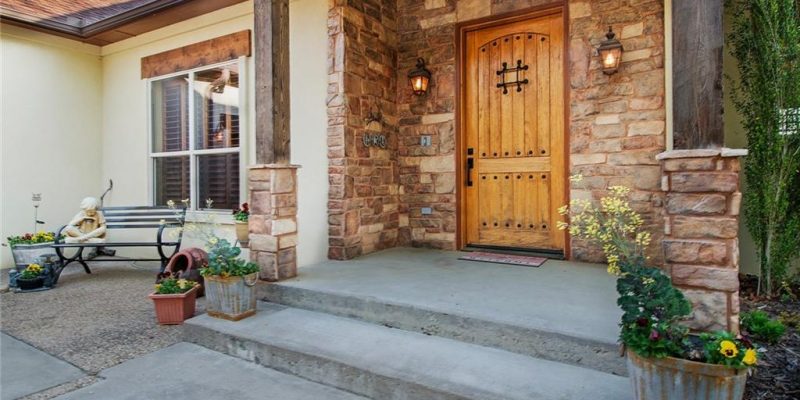It’s time to move and you and your family have reached the decision that you know you want a new home. The resale market just won’t do this time! You want something bigger, more modern, more energy-efficient… Great! So, now what? How do you decide between a custom builder vs a production builder? What are the major differences?
Production home builders are classified as builders who typically build in subdivisions or master-planned communities while custom builders typically build on single lot projects but may enter a subdivision on limited lots and are more flexible with floor plan changes.
Production home builders have sets of plans that they normally sell together in those communities designed specifically for lot sizes or market areas, and that have certain building specifications that each community adheres to. There is another group of builders that are called custom home builders who operate just a little bit differently. Custom home builders may or may not offer sets of plans, typically build on single lot projects but may enter a subdivision on limited lots and are more flexible with floor plan changes.
How do you know which option is the best for you?
If you have a piece of land somewhere that you want to build your home on, the answer is easy! You’ll more than likely have to use a custom home builder because not many production builders are able to build one-time projects for customers. However, if you don’t own land, you’ll have to do a little bit of research and exploring in the area you want to live to figure it out. Let’s look at some of the ways custom and production home builders differ.
 Production Homes – Customization
Production Homes – Customization
When walking into a model home or builder’s office, a traditional production home builder will have a set of plans that they offer for the community you are considering. Most of the time, these plans have been carefully vetted for the market area, lot size, and demographics, and have been approved by the developer.
Some buyers walk in and find the perfect 4-bedroom plan for them, but for most others, the floor-plans & options offered with them do not check off all of their boxes. Many customers will ask if a wall can be moved to make a bedroom larger, if a bathroom can be added, or if something else can be created out of a room. The short answer for most production builders will be “no.”
While it would seem easy on paper to move a wall over a few feet, there is a lot more that goes into a plan change than meets the eye. In most production builders, and in most market areas, plans now must be engineered to meet certain standards and any and all changes now require it to be re-engineered. That one little change could cost upwards of $5,000 depending on the requirements of the builder and/or municipality. Additionally, that re-engineering costs the company 4-8 weeks of time, and we all know, time is money! As a result, we are now seeing that builders are having to draw a hard line in the sand for customers when it comes to changes. As we move up in price points, the line does begin to fade, since $5,000 isn’t as big of a deal on a home that is $500,000 as it is for one priced at $200,000, but it never fully goes away.
What makes a custom home?
Custom home builders typically have not had to go through such a rigorous process ahead of time with their plans. Most have a library of floor-plans to use as a starting point, but the time and money required for the planned engineering is already built into the custom home builder’s price point and timeline. This allows for more flexibility when it comes to making the home your own, and unique to your own needs.
Financing
When building with a production home builder, most of the time you’ll be working with a sales staff out of a model home. Their base floor-plan prices will include the standard specifications and the standard lot. You’ll get to upgrade with plan options, design options, and lot premiums, but the bulk of what you’re getting is already wrapped up nicely in that $300,000 price tag.
Once you’ve settled on a lot and structural options, you’ll be required to put down an earnest deposit. This deposit and contract will signal the builder’s operations team to begin the process, securing the interim construction financing, paying for the lot from the developer, and ordering supplies. Earnest deposits range in amount from 1% to 10% and, apart from an upgrades deposit, that will be all you are liable for until you go to the closing table.
If you own your current home, you are allowed the opportunity to sell it before assuming the mortgage on the new home. If you cannot sell your home, and you cannot carry 2 mortgages, you will be given the opportunity to cancel your contract. As a rule, you will only be making one monthly loan payment while your new home is being built.
The production builder has far more dollars on the line than the customer in these cases and stands to lose a lot more if their customer does not complete their purchase (another reason why customization is rarely allowed). If for some reason you did cancel your contract, you may or may not receive your deposit back, but the builder is left with the task of marketing the home that was built for you – your lot, your specifications that someone else may or may not have chosen.
Are custom built homes more expensive?
In most custom home builder transactions, the customer is responsible for securing the land on their own as well as a construction loan. If you currently own another home, you will be required to carry the loan for not only that home, but for your land and construction loan as well. That means, for someone to even be able to build a custom home, they have to have an impeccable financial history.
As you move through the custom home building process, deposits will be due to each vendor. You can expect to pay more in general than you would building with a production builder because custom home builders do not benefit from the same level of bulk purchases of materials as their production counterparts.
 Design Choices
Design Choices
Production builders typically offer 8-12 floor-plans in each community with 5-6 plan options (media rooms, studies, extra baths) per plan, and 3-4 exterior or elevation options to choose from. Design selections will vary greatly from builder to builder. Many production builders are moving design selections into the model home for their more economic communities and allowing their higher price point buyers the luxury of selecting their options from a design center with many more upgrade offerings.
Regardless of the price point, selections will be limited at the very least to how many vendors the builder has a relationship with. While a builder may be able to order from GE, Whirlpool, and Frigidaire, one appliance vendor is typically assigned to each community and they cannot be offered in others. They may have 2-3 flooring vendors, 1-2 counter-tops vendors, 1 lighting company, etc. If there is a beautiful ceiling fan from a high-end lighting store you want, and a very specific cook-top that is a brand not offered by your builder, you are out of luck until after closing. You’ll have to have the brand new appliance taken out, sell it for a used price, and then pay to have someone install your new option on your own. Many buyers can also, unknowingly, void all or part of their warranty by doing this!
When building with a custom home builder on your own lot, you are not tied down to the developer approved elevations or a limited number of options. Your main limitations with a custom builder will come from building codes and your own budget. Customers are typically afforded the opportunity to visit multiple vendors for flooring, cabinets, or counters allowing for a seemingly endless array of selections to choose from. In order to see all of your options together, you may have to purchase a cabinet door, or tile to take around with you to compare to granite slabs. If this is your dream home, that’s probably no big deal, however, for some customers, too many choices can only complicate the process and cause confusion.
Both production and custom building can seem hectic and overwhelming at times. Allow yourself to take your time in making decisions and enjoy the process. Remember, most selections you make can eventually be changed out for something that you like a little more or is higher end. So, if you cannot afford the custom price tag, upgrade your production home slowly as life allows you to. Regardless of the choice you make, when building a home you can almost always be guaranteed that it will be absolutely beautiful and exactly what you needed!


